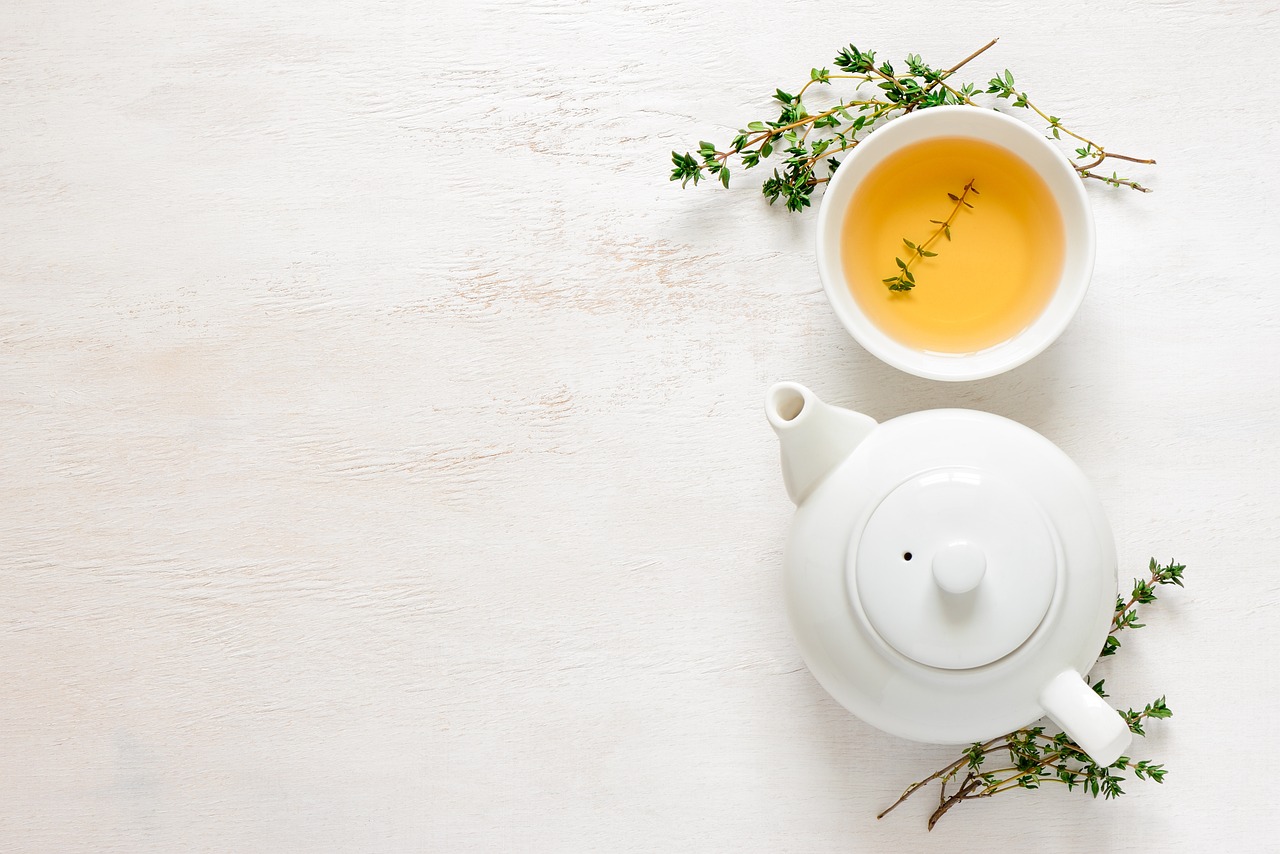Transform your traditional British menu with a delightful tea pairing experience. Discover how the right teas can enhance your culinary creations, bringing out flavors that surprise and delight. Whether you're serving scones, sandwiches, or desserts, pairing them with the ideal tea elevates the occasion to new heights. Embrace the art of tea pairing and leave your guests with unforgettable memories at your next gathering. Let’s explore the perfect combinations that will redefine your dining experience.
Introduction to British Tea Culture
Understanding British tea traditions requires delving into its rich history and cultural significance. Tea has been more than just a beverage; it represents a cornerstone of British social life. From afternoon teas to high teas, the evolution of tea culture in Britain is marked by its role in social gatherings and meals.
Also to read : Elevate your small gourmet cafe: expert tips for effective reservation and waitlist management
In the 17th century, tea was introduced to Britain and quickly became a symbol of sophistication. Its popularity soared, leading to the establishment of tea gardens and the iconic afternoon tea tradition. The cultural significance of tea was further cemented during the Victorian era, where it became a daily ritual.
Key historical events have shaped these traditions. The Boston Tea Party in 1773, though an American event, highlighted the global importance of British tea. The subsequent Tea Act and its impacts on trade and consumption patterns were pivotal.
Also read : Elevate your small pub kitchen: innovative strategies for optimizing vertical space
Evolution of Tea Culture
- 17th Century: Introduction of tea to Britain.
- Victorian Era: Rise of afternoon tea as a social event.
- Modern Day: Tea remains integral to British identity.
The enduring appeal of tea in Britain is a testament to its adaptability and enduring charm, making it a beloved tradition that continues to unite people across generations.
Understanding Tea Types
Exploring the diverse world of tea varieties
Overview of Different Tea Types
British menus often feature a variety of tea types, each offering unique flavors and experiences. Black tea is the most traditional, known for its rich and robust flavor. It's often enjoyed with milk and sugar, making it a staple in British households. Green tea, on the other hand, is celebrated for its lighter, more delicate taste and is often associated with health benefits due to its high antioxidant content. Additionally, herbal teas provide a caffeine-free alternative, offering a wide range of flavors from chamomile to peppermint.
Characteristics and Flavor Profiles
To better understand these tea types, consider their flavor profiles. Black tea typically features bold and malty notes, while green tea offers a grassy, sometimes sweet flavor. Herbal teas vary widely; for instance, chamomile is floral and calming, whereas peppermint is refreshing and invigorating.
Best Practices for Selecting High-Quality Tea Leaves
Selecting high-quality tea leaves enhances the tea-drinking experience. Look for whole leaves, which indicate careful processing and better flavor. Pay attention to the aroma and color; fresh tea leaves should have a vibrant scent and consistent hue.
- Black Tea: Rich, bold
- Green Tea: Light, grassy
- Herbal Teas: Diverse, caffeine-free
By understanding these tea types, you can make informed choices and enjoy the best that British tea culture has to offer.
Pairing Principles for Tea and Food
Exploring the art of culinary harmony with tea and food
Fundamental Principles of Food and Tea Pairing
Pairing tea and food is an art that enhances the dining experience by bringing out the best in both. The fundamental principle is to balance flavors, ensuring that neither the tea nor the food overpowers the other. This involves understanding the flavor pairing dynamics, where complementary and contrasting flavors play a crucial role.
Exploring Complementary and Contrasting Flavors
Complementary flavors create harmony, such as pairing a rich black tea with a hearty breakfast, like a traditional English fry-up. Contrasting flavors, on the other hand, can add excitement to the palate. For example, a subtle green tea can be paired with a spicy dish to create a refreshing contrast.
Tips for Balancing Tea with Rich or Subtle Dishes
When balancing tea with rich dishes, opt for bold teas that can stand up to intense flavors. Conversely, pair light and subtle dishes with delicate teas. Here are some tips:
- Rich Dishes: Pair with robust black or oolong teas.
- Subtle Dishes: Match with green or white teas.
- Spicy Foods: Complement with light, refreshing teas.
By applying these pairing principles, you can achieve a delightful culinary harmony that elevates your tea-drinking experience.
Signature British Dishes for Tea Pairing
Exploring the harmony of British cuisine and tea
Overview of Classic British Dishes
British cuisine offers a rich array of classic dishes perfect for tea pairing. Scones with clotted cream and jam are quintessential, often served with a robust black tea. Fish and chips, a beloved staple, pairs well with a light, refreshing green tea to balance the dish's richness. For a hearty option, shepherd's pie complements the malty notes of an oolong tea.
Detailed Suggestions for Specific Tea Pairings
To elevate your tea experience, consider these pairings:
- Scones: Best enjoyed with a strong Earl Grey or Assam tea for a classic afternoon tea.
- Fish and Chips: A delicate jasmine green tea enhances the dish's flavors.
- Shepherd's Pie: Pair with a Darjeeling or oolong tea for a balanced taste.
Seasonal Variations in Pairing Options
Seasonal variations can influence food pairings. In summer, opt for iced teas with light dishes like cucumber sandwiches. During winter, a spiced chai pairs beautifully with mince pies.
By exploring these British cuisine options, you can discover delightful combinations that highlight the best of both food and tea. This approach not only enriches the dining experience but also celebrates the timeless charm of British culinary traditions.
Innovative Tea Pairing Recipes
Discover the art of culinary creativity with tea-infused dishes
Unique Recipes Incorporating Tea
Tea's versatility extends beyond the teacup, offering exciting opportunities in gourmet recipes. Imagine the rich aroma of Earl Grey-infused scones or the delicate flavor of green tea in a creamy panna cotta. These tea-infused recipes highlight the potential of tea as a culinary ingredient, adding depth and complexity to dishes.
Step-by-Step Guide to Tea-Infused Dishes
Creating tea-infused dishes involves simple steps. Start by selecting a tea that complements your dish. For savory items, consider black tea or oolong tea. Steep the tea in hot water, then use it as a base for sauces or marinades. For desserts, incorporate green tea or herbal teas into creams or batters.
- Earl Grey Scones: Infuse cream with loose-leaf Earl Grey, mix with flour, sugar, and butter, bake until golden.
- Green Tea Panna Cotta: Steep green tea in cream, combine with sugar and gelatin, chill until set.
Highlighting Tea's Versatility in Various Cuisines
Tea's adaptability shines in diverse cuisines. From Asian-inspired green tea noodles to British classics like tea-smoked salmon, the possibilities are endless. This creative approach not only enhances flavors but also offers a fresh perspective on traditional dishes, making tea-infused recipes a delightful exploration for any culinary enthusiast.
Presentation Tips for Tea and Food
Enhancing the dining experience through visual appeal
Importance of Visual Appeal in Food and Tea Presentation
The visual appeal of your food presentation can significantly enhance the dining experience. A beautifully arranged tea table invites guests to savor both the flavors and aesthetics of the meal. Consider using elegant teacups and plates that complement the colors of your dishes. The artful placement of tea and food can transform a simple gathering into a memorable occasion.
Creative Ways to Serve Tea Alongside Traditional Dishes
Serving tea alongside traditional dishes offers an opportunity for creativity. Use tiered stands to display scones, sandwiches, and pastries, adding height and interest to your table. Incorporate themed napkins or tablecloths to reflect the season or occasion. A tea table set with thoughtful details not only delights the eye but also enhances the overall dining experience.
- Tiered Stands: Showcase a variety of treats.
- Themed Tablecloths: Match with the season or event.
- Elegant Teacups: Elevate the presentation.
Tips for Setting an Inviting Tea Table
To set an inviting tea table, focus on harmony and balance. Mix textures and colors to create a cohesive look. Ensure that each guest has easy access to food and tea, and consider adding a centerpiece, like fresh flowers, to tie the presentation together. Thoughtful table setting elevates the enjoyment of both tea and food, making every gathering special.
Experiential Anecdotes and Stories
Exploring the personal touch of tea experiences
Personal Anecdotes Related to Tea Pairings
Sharing personal stories about tea pairings can transform a simple beverage into a tapestry of memorable moments. One might recall a cozy winter afternoon, sipping Earl Grey with freshly baked scones, evoking warmth and nostalgia. These experiences often become cherished tea moments that highlight the emotional connection between flavor and memory.
Cultural Stories That Inspire Tea Traditions
Cultural narratives around tea are rich with tradition and inspiration. Consider the tale of a British grandmother who, every Sunday, hosts a tea gathering for family and friends. This ritual not only strengthens bonds but also passes down the art of tea pairing to younger generations, fostering a sense of community and continuity.
Impact of Tea on Social Interactions
Tea has a profound impact on social interactions, serving as a catalyst for gatherings and conversations. Whether it's a formal afternoon tea or a casual chat over a steaming cup, tea creates an atmosphere of connection and relaxation. These tea experiences are often the backdrop for significant life events, making them integral to social life.
- Personal Stories: Emotional connections
- Cultural Traditions: Community building
- Social Interactions: Enhancing connections
In these ways, tea continues to weave itself into the fabric of daily life, enriching our experiences and memorable moments.
Elevating the Tea Pairing Experience
Exploring strategies for a memorable tea pairing event
Strategies for Creating a Memorable Tea Pairing Event
To create an immersive dining experience, focus on engaging all senses. Begin with a visually appealing table setting, using elegant teapots and cups to enhance the dining experience. Consider a sensory experience that includes not just taste, but also aroma and ambiance.
Engaging the Senses Beyond Taste
The aroma of freshly brewed tea can significantly enhance the sensory experience. Choose teas with distinct scents, such as jasmine or Earl Grey, to captivate guests. Complement this with a soothing background sound, like soft classical music, to elevate the dining experience further.
- Aroma: Select teas with distinctive scents
- Sound: Incorporate gentle background music
- Ambiance: Use lighting to create a cozy atmosphere
Encouraging Guest Interactions and Discussions
Encourage guest interactions by arranging seating to facilitate conversation. Provide tasting notes for each tea, prompting discussions about flavor profiles and pairing principles. This not only enriches the dining experience but also fosters a shared sensory experience.
"Tea is the magic key to the vault where my brain is kept." – Frances Hardinge
By focusing on these elements, you can craft a memorable and immersive dining event that leaves a lasting impression on your guests.
Resources for Further Exploration
Discover valuable resources to deepen your understanding of tea
Recommended Books and Websites
To expand your knowledge of tea resources, consider delving into a selection of culinary guides and educational materials. Books such as "The Tea Enthusiast's Handbook" and "The World Atlas of Tea" offer comprehensive insights into the world of tea. Websites like Tea Epicure provide in-depth articles and tea education resources, perfect for enthusiasts eager to learn more.
Workshops and Classes
Engaging in workshops and classes focused on tea pairing and preparation can significantly enhance your appreciation and skills. Look for local tea houses or culinary schools that offer sessions on tea education. These experiences provide hands-on learning and the opportunity to explore the art of tea pairing with expert guidance.
Local Tea Shops and Online Retailers
Sourcing high-quality tea is essential for any tea lover. Local tea shops often carry unique blends and provide personalized recommendations. Additionally, online retailers such as Harney & Sons and Adagio Teas offer a vast array of options, allowing you to explore tea resources from the comfort of your home.
- Books: "The Tea Enthusiast's Handbook"
- Websites: Tea Epicure
- Retailers: Harney & Sons, Adagio Teas
These resources offer a pathway to deepen your tea education and enhance your culinary adventures.
Conclusion and Call to Action
Explore new horizons with tea pairing inspiration.
Encouragement to Explore New Pairings
Embrace the world of tea pairing inspiration by stepping outside your comfort zone. Experiment with different culinary exploration ideas to discover unique combinations. Whether it's pairing a robust black tea with a savory dish or a delicate green tea with a light dessert, the possibilities are endless.
Invitation to Share Experiences
Your journey in culinary exploration is valuable. We invite you to share your personal experiences and insights. How did your latest tea pairing inspiration elevate your dining experience? Your stories can inspire others to embark on their own culinary exploration.
Suggestions for Further Exploration
To continue your tea pairing inspiration, consider these suggestions:
- Try Seasonal Pairings: Adapt your pairings to the seasons for fresh experiences.
- Host a Tea Tasting: Invite friends to explore new flavors together.
- Document Your Journey: Keep a journal of your favorite pairings and discoveries.
By diving into culinary exploration, you'll not only enhance your appreciation for tea but also uncover new dimensions of flavor. Share your experiences and inspire others to join in this delightful journey of tea pairing inspiration.











